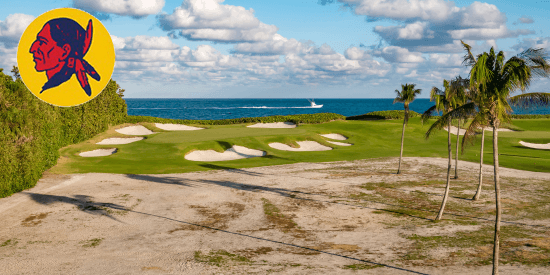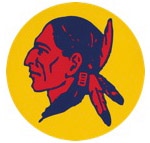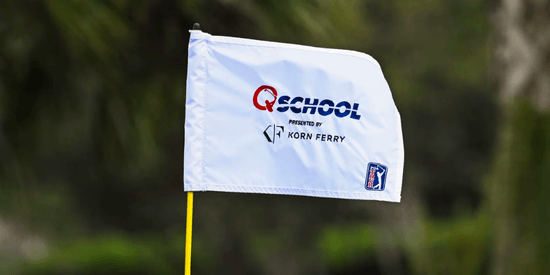Seminole Golf Club set to host the prestigious George L. Coleman Invitational
4/25/2023 | by AmateurGolf.com Staff
see also: George L. Coleman Invitational Golf Tournament, Seminole Golf Club

Two-time U.S. Mid-Am champ Stewart Hagestad is one of 14 USGA champions in the field for one of amateur golf's premier events
Stewart Hagestad can’t wait to arrive at Seminole Golf Club for the prestigious George L. Coleman Invitational.
His last two competitions at the hallowed Donald Ross-designed gem have gone extremely well.
In 2021, he was a member of the winning U.S. team in the Walker Cup at Seminole, the first time the international matches were held in Florida. Hagestad won his singles match to complete the Americans’ 14-12 victory over the Europeans.
“It’s really cool to have your name on that wall,” Hagestad said. “There’s a lot of history in that room.”
Hagestad chose history over money when it comes to playing golf. The 32-year-old Newport Beach, CA., native has turned down many overtures to play professionally after graduating from the University of Southern California. He is steadfast in his decision.
“The reason I didn’t turn pro is I enjoy having more to my life than just playing golf,” said Hagestad, who works at a prominent real estate firm in New York City.
It would be hard to regret the decision after Hagestad won the 2016 U.S. Mid-Amateur to earn a spot in the 2017 Masters, where he made the cut (T36) and earned low amateur honors. He also won the 2021 U.S. Mid-Am, has qualified for four U.S. Opens and played on three winning Walker Cup teams.
In many ways the Masters and the Coleman are similar: Contestants are thrilled when they receive their invites in the mail around the first of the year. And just like the Masters serves as the unofficial start of the golf season, the Coleman is the designated kickoff for the top mid-amateurs who must be at least 25 to compete.
“Everyone is aligned with the Masters,” Hagestad said. “When you hear the piano and watch the commercials in January, you know what’s coming. From a mid-am standpoint, the Coleman is the start of the competitive season. Everyone is anxious to get their competitive juices flowing.”
The defending champion is part of another stellar Coleman field that includes six U.S. Mid-Am winners (Hagestad, Trip Kuehne, Scott Harvey, Mike McCoy, Nathan Smith and Matt Parziale) and eight U.S. Senior Amateur champs (Rusty Strawn, Gene Elliott, Bob Royak, who won last year’s Coleman senior division, Dave Ryan, Chip Lutz, Patrick Tallent, Doug Hanzel and Paul Simson).
“It’s a very good field, one of the best we’ve had,” said tournament director Alan Fadel. “We want the best Mid-Ams in the world to aspire to come to this event.”
Along those lines, there are 11 international players among the field which includes 66 mid-ams and 45 seniors. Fadel said that’s by design because this week isn’t just about the competition. The Coleman contestants are treated like Seminole members for the week, which allows for plenty of socializing.
“It’s a great opportunity not only to compete against each other, but to talk about the game,” Fadel said. “These are people who could have an influence on the game because of their accomplishments.”
No doubt part of the conversation will be about the sport’s battle with distance. Last month the USGA and R&A announced a proposal that would limit how far the ball travels in elite competition, starting in 2026.
Would Seminole consider implementing a one-ball rule for the Coleman?
“We have discussed it,” said Fadel, a former professional. “We probably don’t need it with Seminole at 7,250 yards. But the distance these guys are hitting golf balls is dangerous in some cases and limits venues. I think it’s a good rule. I don’t think technology should antiquate golf courses that have been around for 150 years.”
At Seminole, built hard by the Atlantic Ocean, distance is not the biggest issue. The fabulous Ross design took advantage of a rare sand dune ridge in South Florida to produce elevation changes. The devilish greens remain Seminole’s biggest defense, along with the ever-changing wind coming off the Atlantic.
“Seminole is such a stressful golf course,” Hagestad said. “The greens are always firm and fast and usually the wind is blowing. It throws a lot of tests at your game.”
So how has the 6-foot-5 Hagestad stood tall on one of the world’s most difficult courses? He thinks his lower ball flight helps, as does his strategy.
“I’ve done a good job of managing my way around there and leaving it in great spots,” Hagestad said. “If you try to attack this golf course, that’s when it can bite you. I try to stay patient and be prepared for what the week is going to offer.”
Coleman, an oil tycoon, was Seminole’s president from 1981-92. Coleman was close friends with Ben Hogan and Bing Crosby and featured in Mark Frost’s book The Match.
• • • • •
Craig Dolch is a 40-year journalist who has covered golf, been to 50 majors as well as a series of Ryder Cups, caddied at the Honda Classic and for seven years hosted golf radio show on ESPN West Palm. He was a longtime golf writer for the Palm Beach Post and his work as appeared in Sports Illustrated, New York Times, Golf World, Golf Digest and USA TODAY.
About the Coleman Invitational

NOTE: The Coleman Invitational will be taking a hiatus while the course undergoes renovations to raise the fairways in order to combat a rising water table. One of the very best amateur events all year long played on the last great private course des...
Most Popular Articles

2025 PGA TOUR Q-School Guide: Sites, Scores, and Who Advanced
Dec 5, 2025Second Stage is complete and Final Stage awaits at Sawgrass — follow every Q-School leaderboard and the players still chasing
2025 LPGA TOUR Q-Series: Final Qualifying Stage FINAL SCORING
Dec 8, 2025Helen Briem earns medalist honors, 31 players headed to the LPGA next year
2025 PGA TOUR Q-School Final Stage: Ewart Leads Five New TOUR Card Winners
Dec 14, 2025A.J. Ewart topped Final Stage at TPC Sawgrass, leading five players who secured PGA TOUR membership for 2026.
Australian Open at Royal Melbourne: Preview, amateur bios, and how to watch
Nov 30, 2025Rory McIlroy headlines one of the championship's top fields in years - at least four amateurs will have their chance at gloryInside Gil Hanse’s Restoration of Baltusrol’s Upper Course: A Return to Tillinghast’s
Dec 11, 2025Renowned architect Gil Hanse reveals how he brought Baltusrol’s Upper Course back to life by honoring A.W. Tillinghast’s original
